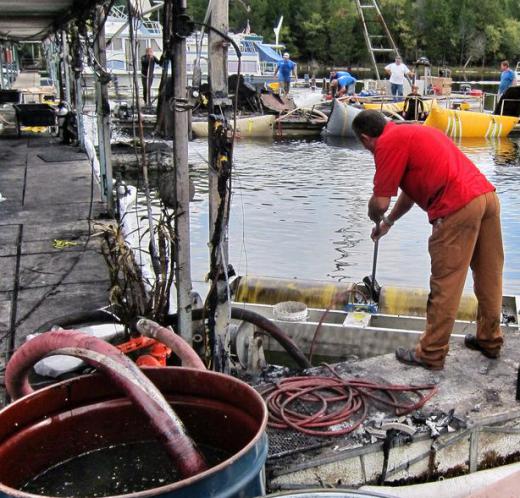Hazardous materials may sometimes leak or spill, even when strict safety precautions have been taken. Spill kits are used in these instances to clean up hazardous products so they do not contaminate land or water. These kits may consist of absorbents that are sprinkled on top of the spill or sponge-like fabrics that are placed around the spill in order to contain it. The kit could also include protective equipment, such as goggles and gloves.
Spill kits come in a variety of sizes and materials. Small kits may consist of a bag of absorbent material such as sawdust, sand, or a product that resembles kitty litter. These are normally designed to clean up spills that are around five to seven gallons (18.95 to 26.53 liters) of liquid.

Larger spills kits can be contained in a bucket with wheels on it. Inside the bucket, there may be absorbent socks or pillows. Socks are long tubular objects designed to be placed around the perimeter of a spill to keep it from spreading. Pillows might be placed on top of hazardous material in order to absorb it. This type of spill kit might also contain gloves, masks, and goggles, along with instructions on how to use the components.

Some spill kits are designed to be used in water. These kits contain special absorbents that float on water. This type of material makes it possible to absorb and contain hazardous liquids that remain on the water's surface when they are spilled. Some common spills this type of kit might be used for include many types of oil and fuel.
Many factories and warehouses that store and use hazardous materials keep spill kits on hand in case of an emergency. These are typically located near dangerous products so they can be easily accessed if needed. Truck drivers who transport hazardous waste may also carry a portable spill kit on board their rig to help clean up vehicle spills if they should happen.
In many countries, spill kits are required in a number of different public areas. They might be located near fuel pumps at gas stations in case a pump leaks or will not shut off. Hospitals might also have spill containment equipment in order to keep blood spills from contaminating patient rooms and visitor waiting areas. Having these kits available and training personnel to use them can help save lives while protecting the environment at the same time.
